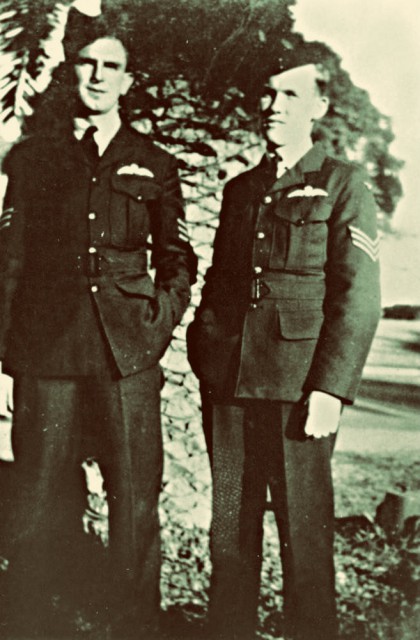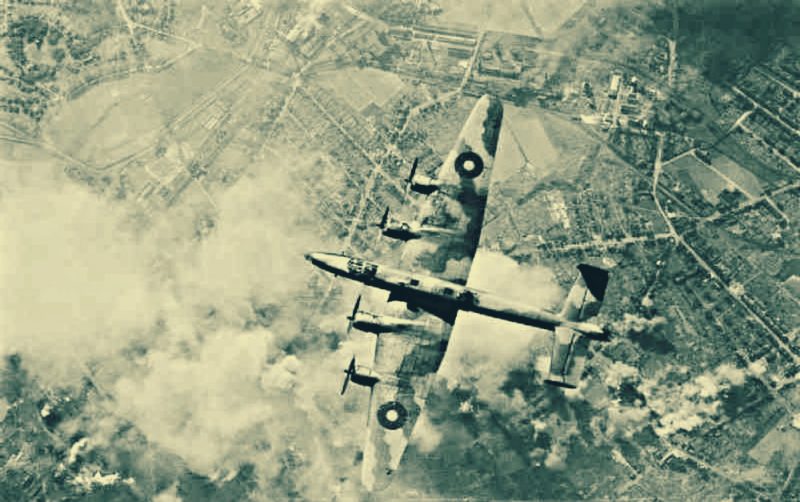Do you believe in miracles? The true-to-life and documented story of WWII Australian pilot Joseph B. Herman might make a believer out of you.
Night of Miracles
Flight Lieutenant Joseph B. Herman was part of the Number 466 Squadron of the Royal Australian Air Force during the Second World War.
The night of November 4, 1944, he was piloting a Handley Page Halifax B.III bomber over the Ruhr Valley in Germany on a nighttime assignment when the plane got hit by an antiaircraft fire. The Germans were known to possess cannons that had a maximum range of 39,000 feet and flying at 18,000, Herman’s plane was an easy target. These cannons had shells that were timed to detonate at a certain height, the shells spewed out jagged shrapnel in all directions when exploding.
The bomber Herman was piloting caught fire so he ordered his crew to bail out. Unfortunately for him, he had taken off his parachute earlier as it was uncomfortable and when he was crawling towards it the plane exploded.
Never losing consciousness, the Australian pilot found himself floating midair surrounded by the bomber’s wreckage. And although it was dark all around, he saw that his parachute was not among the parts surrounding and falling all around him. So, he resigned himself to dying. He was left without a choice but to wait. At first, he screamed and kicked but realizing that his actions were all just a waste of his energy and wouldn’t change the state he was in, he stopped, relaxed and dropped for over 12,000 feet all the while gazing at the rivers and lakes that reflected the moon’s light down.
But as he reached the height of 6,000 feet midair, something unbelievable – akin to miracles – happened
Herman felt something crush into him with great force and when, by instinct, he grabbed on to it, he realized that “it” was a pair of legs.
Those legs belonged to Flying Officer John Vivash, Herman’s mid-upper gunner.
“Hello, is someone there?” Vivash asked.
“Just me, Joe,” said Herman.
“Oh.”
After that short exchange of words, the two airmen fell silent. Both hit the ground with Vivash landing feet first on Herman’s chest breaking two of the latter’s ribs in the process. But miraculously, both survived.
Vivash and Herman went on to bury their lone parachute and avoided capture for four days. However, the Germans were able to catch up with them and they were rounded up. After delivering their story – one of WWII’s miracles – the Germans were at first doubtful about its authenticity. But the two airmen took their captors to the spot where they buried the single parachute that saved both their lives and their captors were forced to admit that indeed, one man fell out of an exploding bomber, was able to grab the legs of one of his crew members and both survived the long fall from the air using only a SINGLE PARACHUTE.
What Made Herman’s Story one of WWII’s Miracles
The story of the two WWII airmen was a lot more amazing than it appeared to be.
For one, Vivash and Herman had to be dropping at the exact vertical line from each other. meaning, if Herman had been a foot away from either side, he would have missed colliding with and grabbing Vivash’s legs.
Secondly, Vivash had just opened his parachute when he collided with Herman causing the latter to grab on to him. Both had achieved terminal velocity and astoundingly, were travelling at the same speed when their encounter in the air happened. Had Herman collided with the crew member just a fraction of a second earlier or later, the impact would have killed them both or hindered the Australian pilot from grabbing his comrade’s legs.
Lastly, had Vivash hang under his chute, Herman would have just whooshed past him unable to grab his legs. Opportunely, Vivash was in the process of swinging horizontally when he collided with the pilot allowing the latter to grab on to his limbs.

Meanwhile, three of the bomber’s crew members were murdered just after they were captured while Joseph Herman went on to spend the rest of World War Two as a POW in a German prison camp.
After the war he became a commercial as well as a crop duster pilot.
